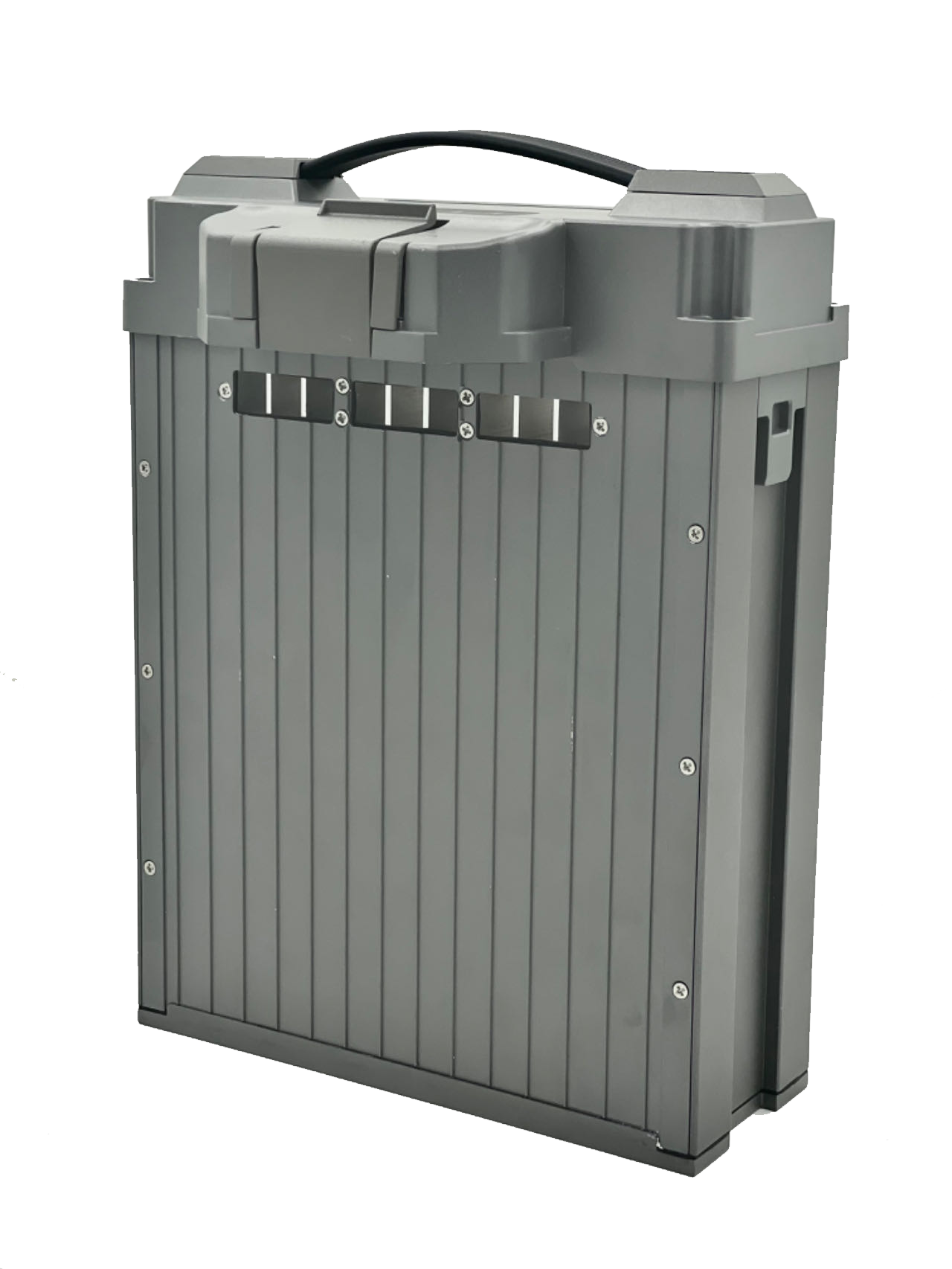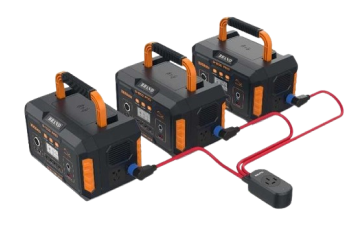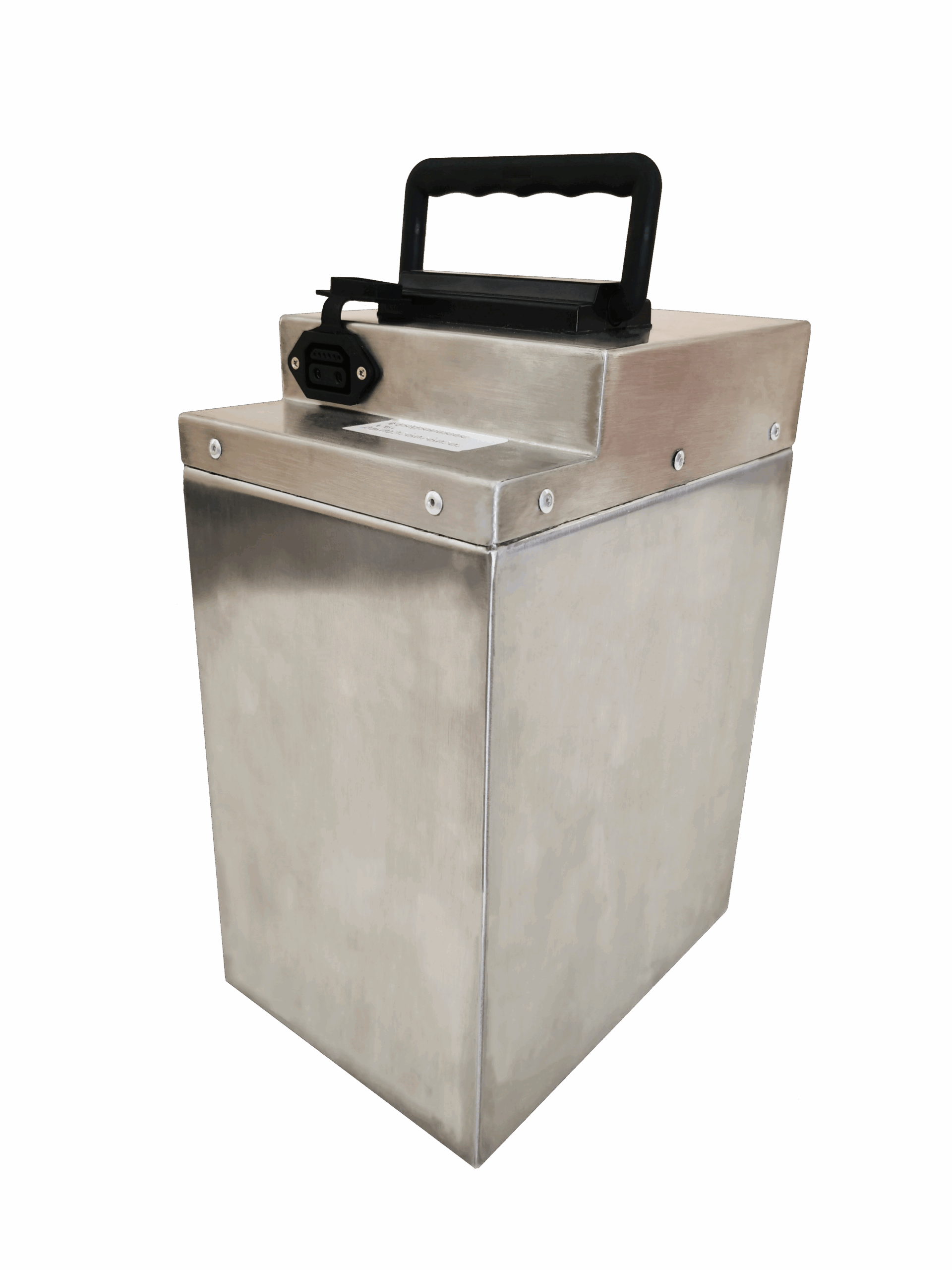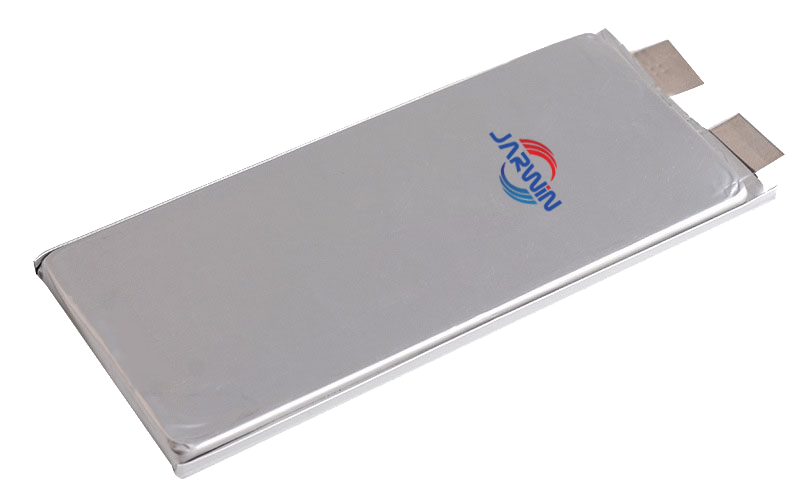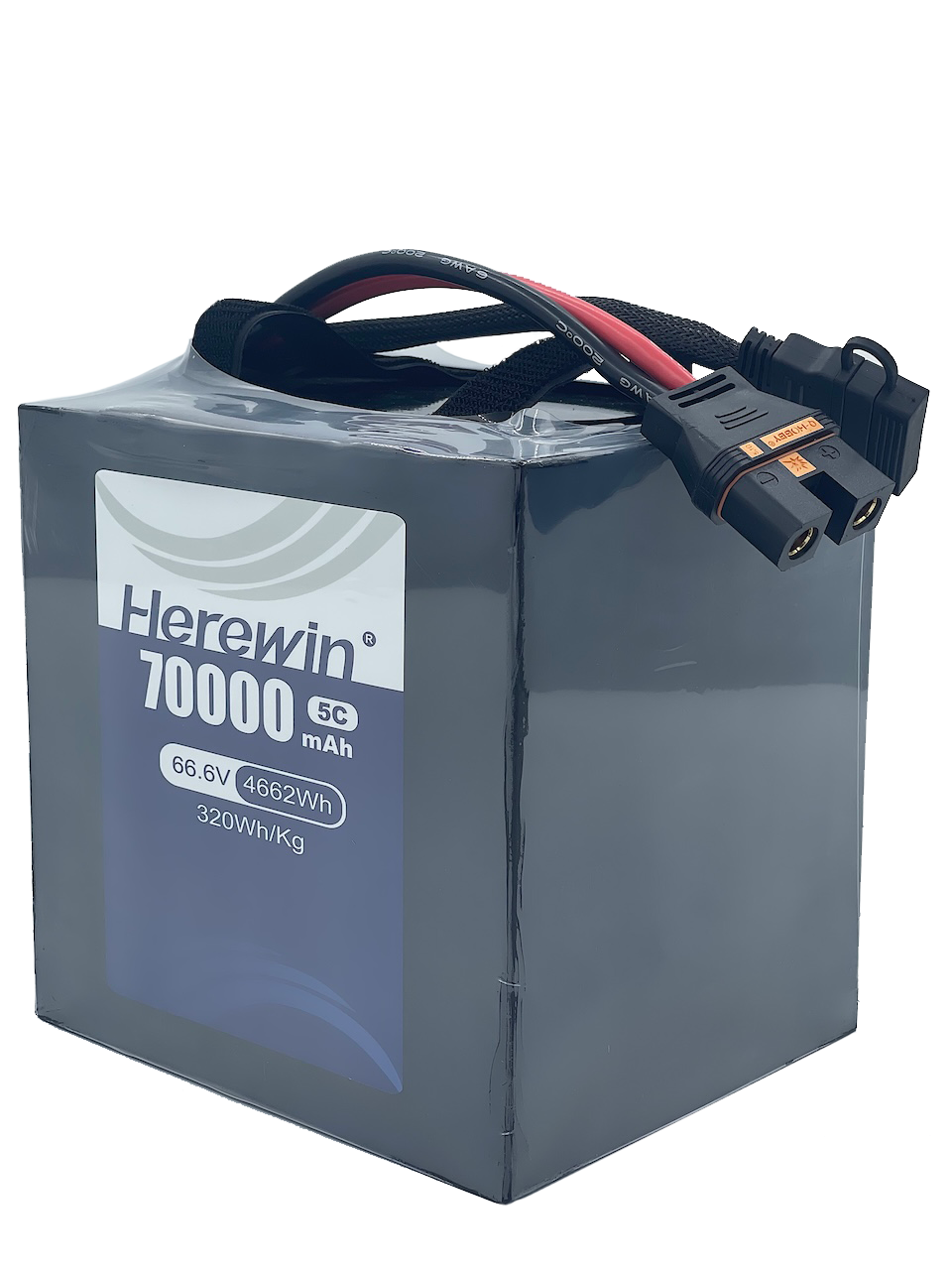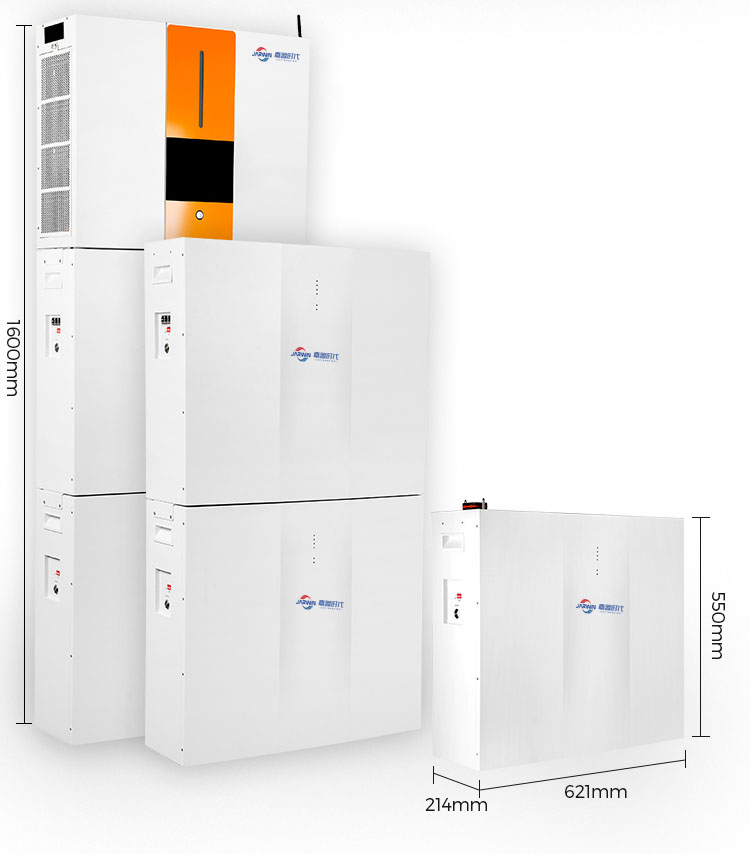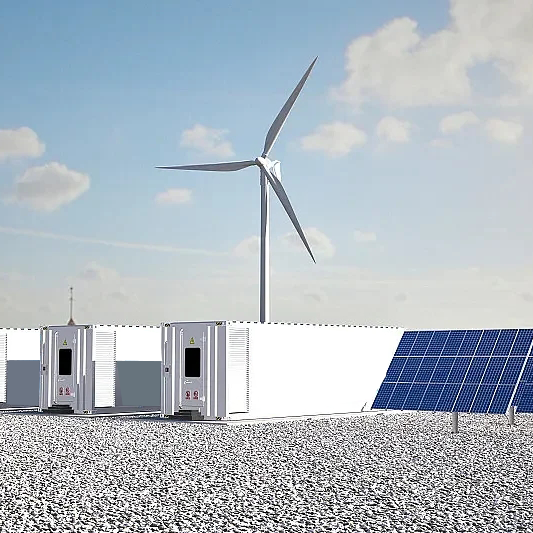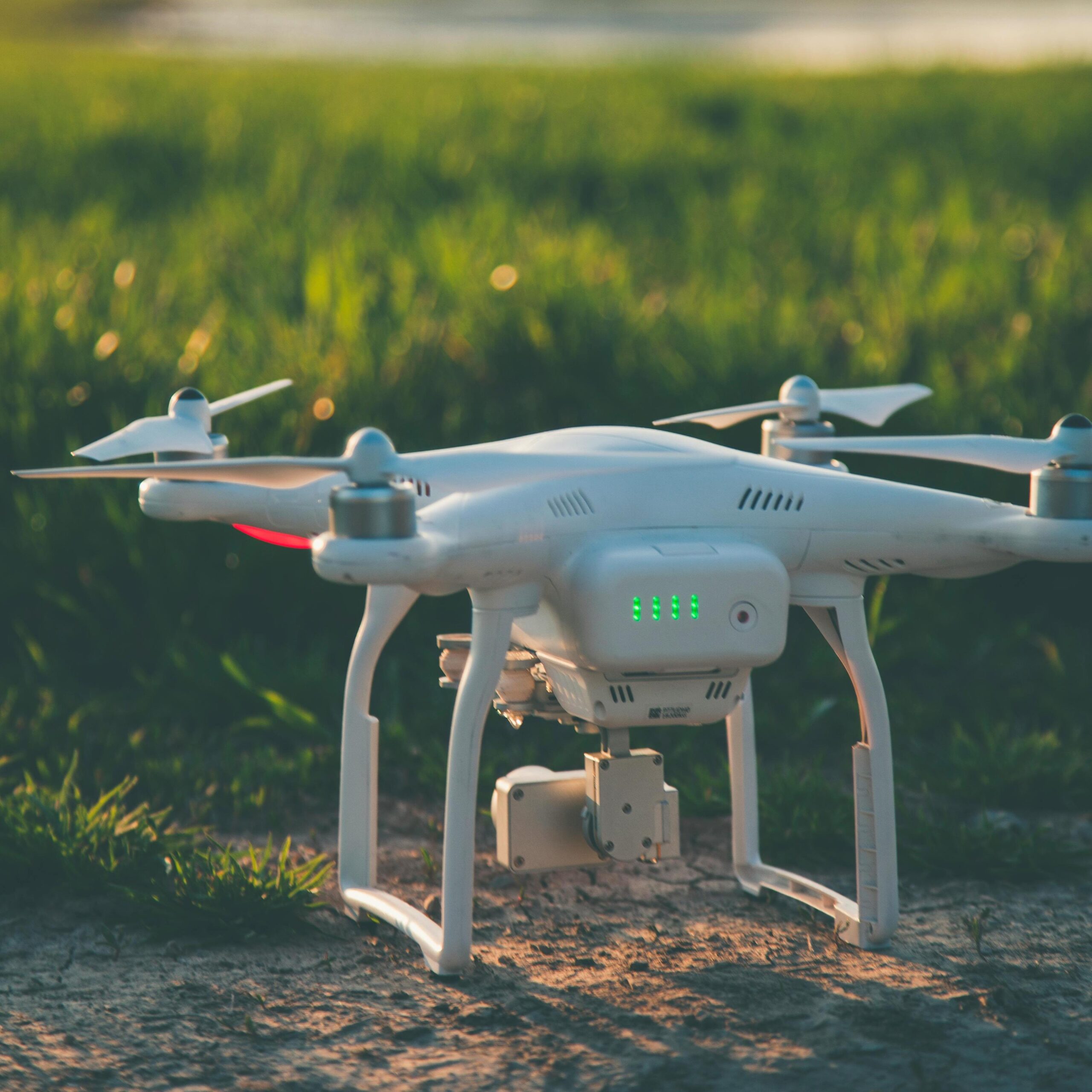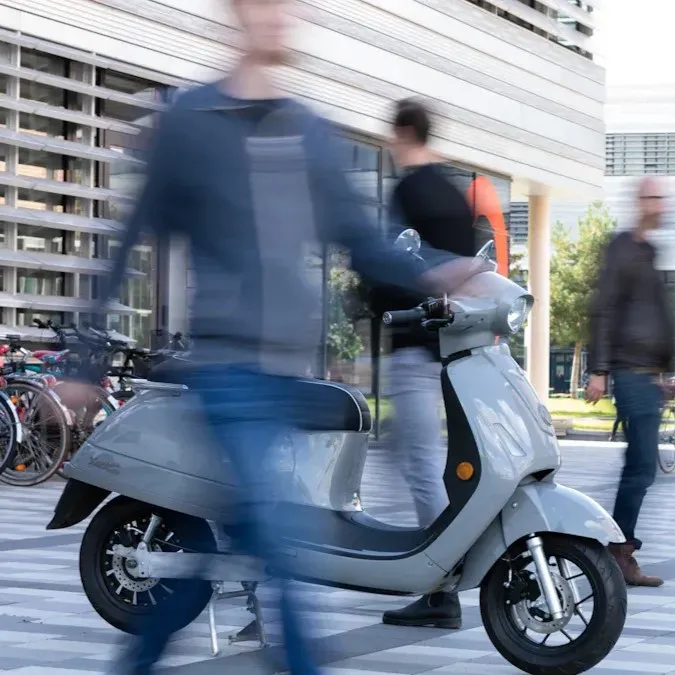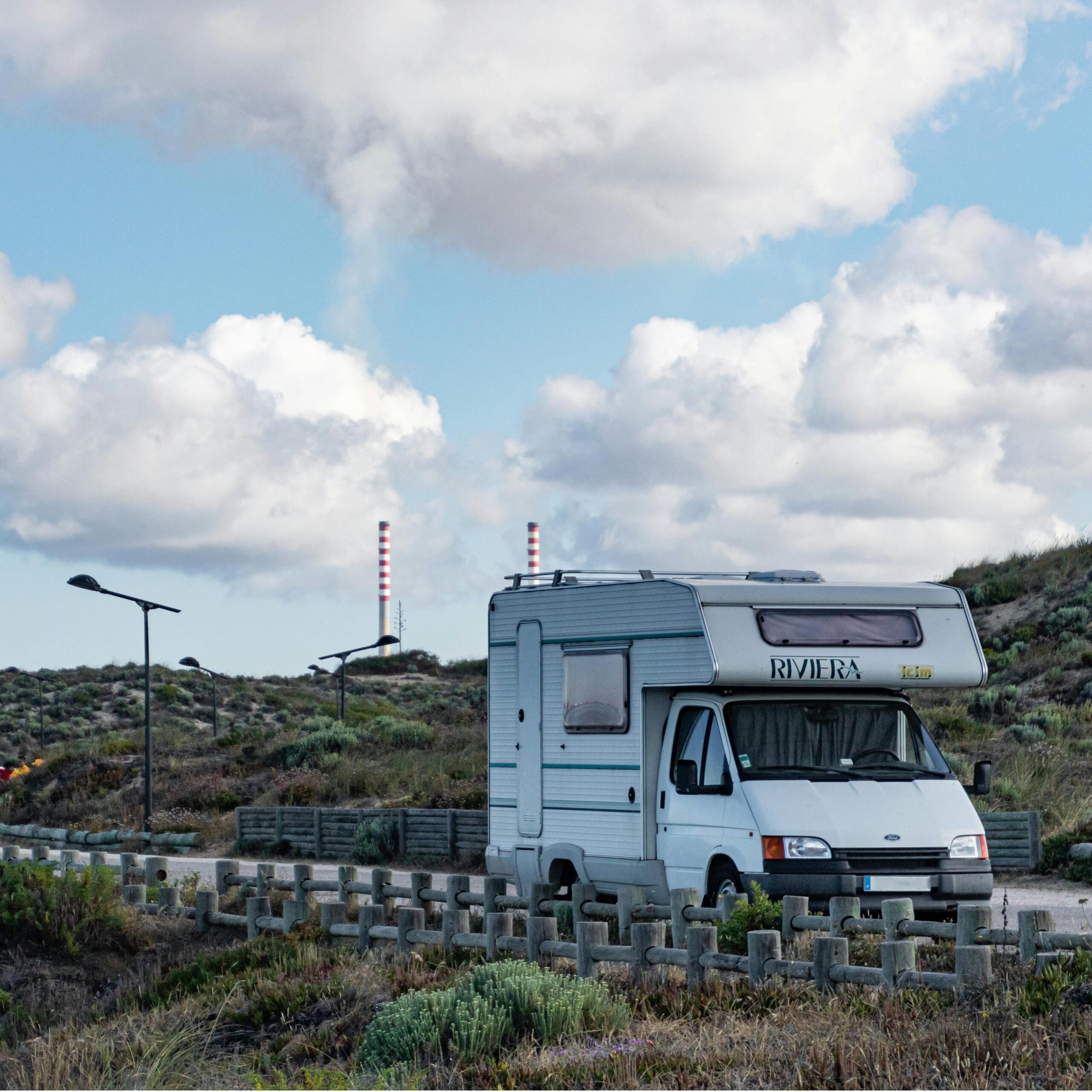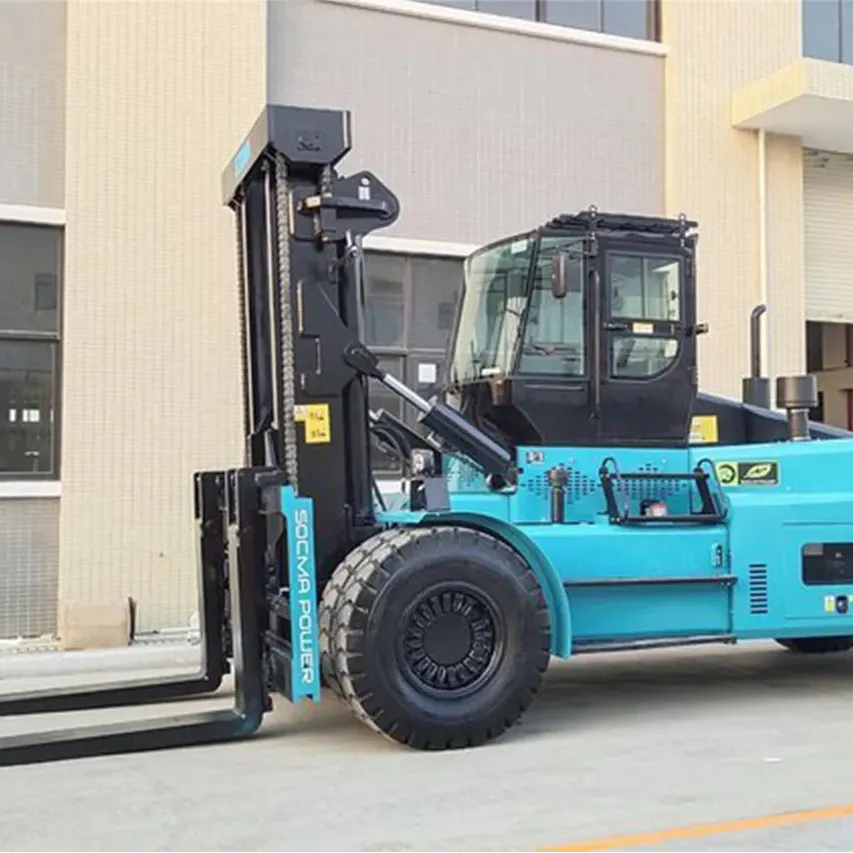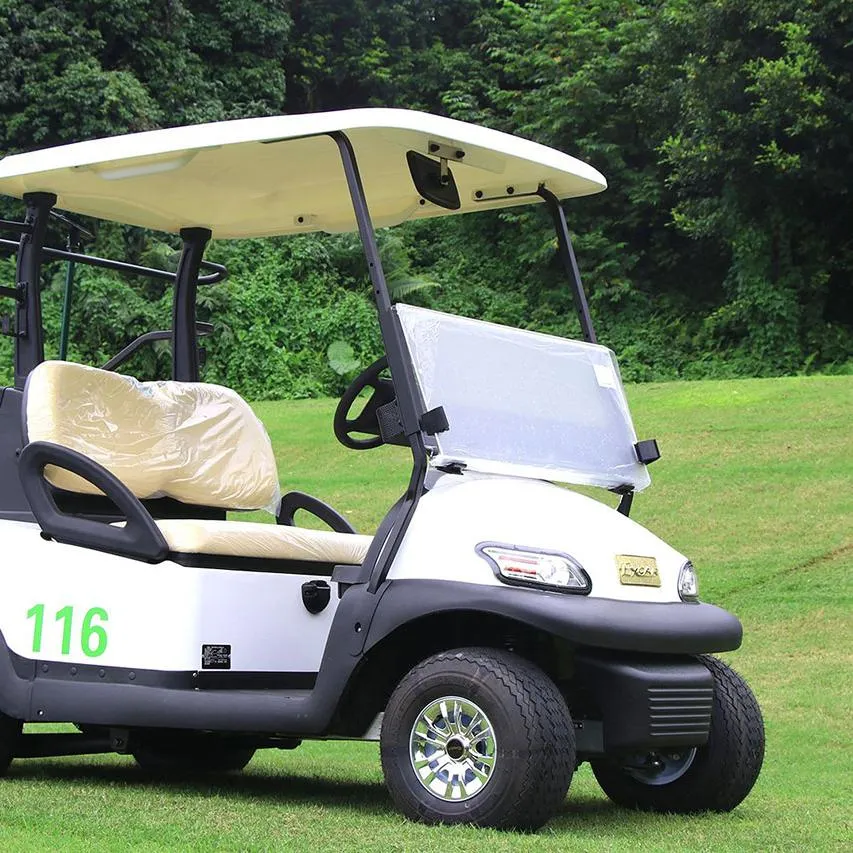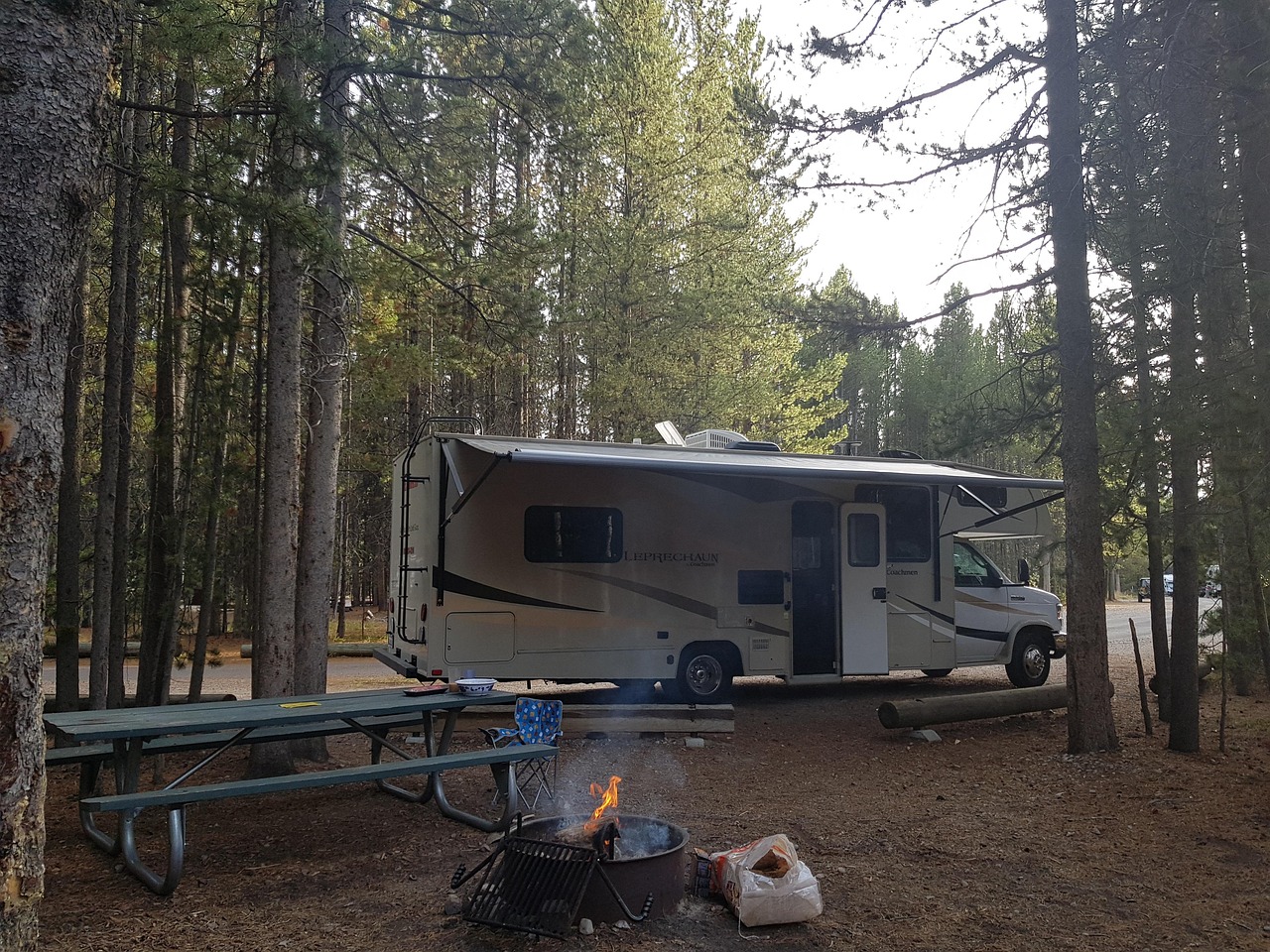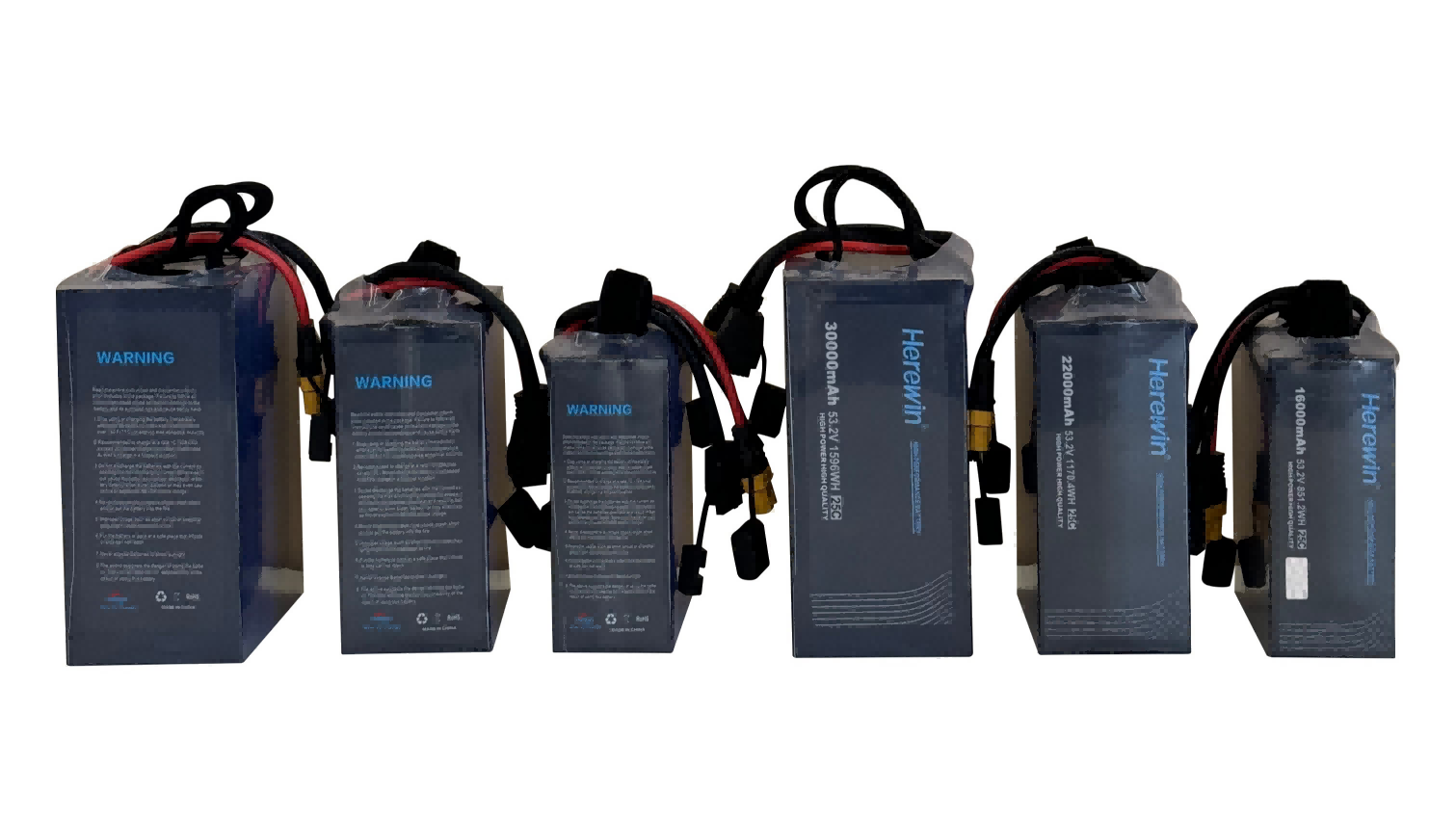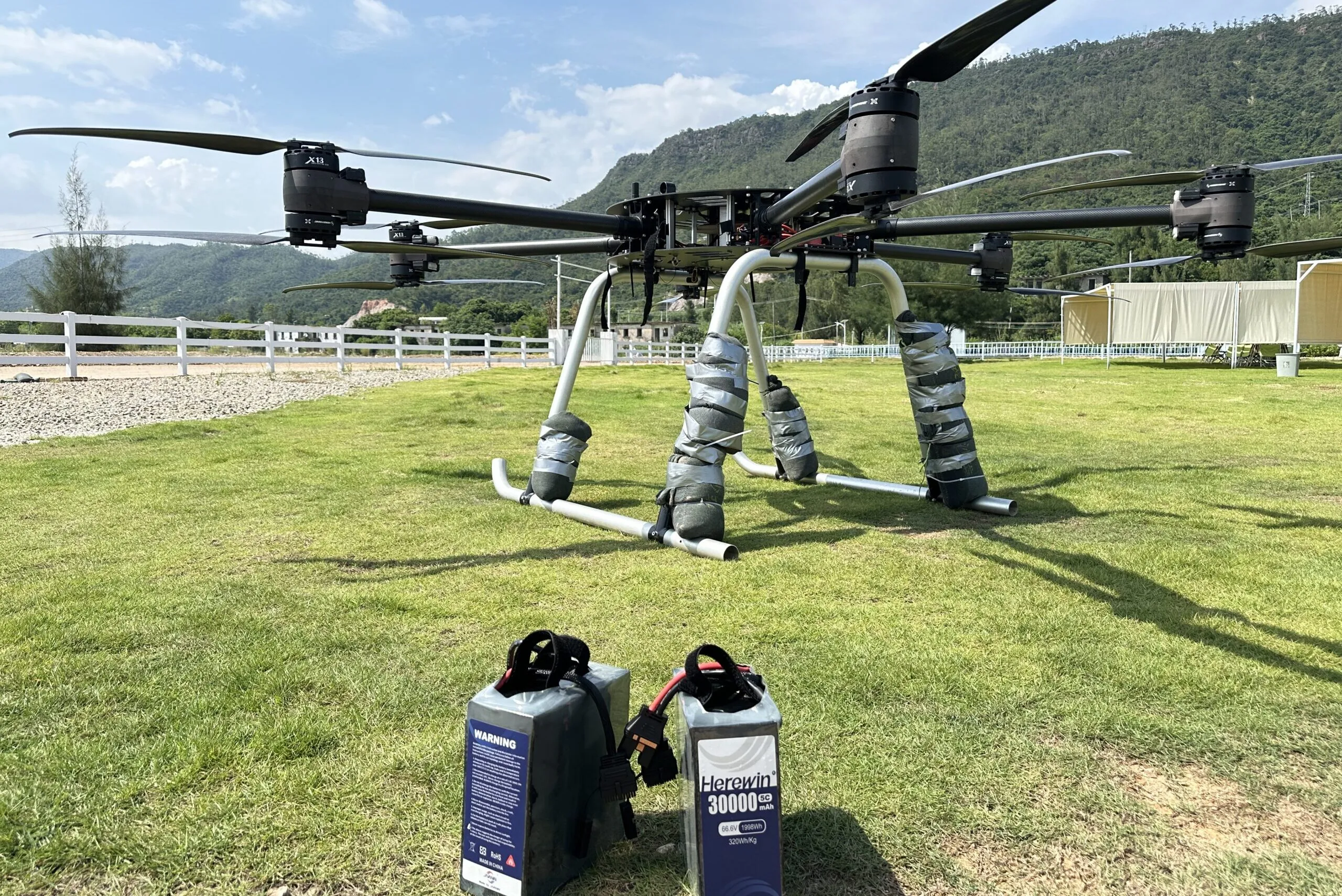
You stand in front of a shelf filled with FPV Batterie der Drohne options, unsure which one fits your needs. The battery you choose shapes how long your drone stays in the air, how fast it moves, and how safe your flight will be. For example, a 5Ah battery with a 60C discharge rate can deliver up to 156A, giving your drone smooth and powerful performance. Choosing the right balance between capacity, discharge rate, and weight keeps your drone agile and safe. Companies like hierwinpower lead the way with advanced battery technology, helping you fly smarter.
Wichtigste Erkenntnisse
- Choose the right battery type—LiPo for power and speed, LiHV for extra voltage and flight time, or Li-Ion for longer flights and safety—based on your flying style.
- Match battery voltage, capacity, and discharge rate to your drone’s motor and ESC specs to ensure safe, strong performance without damage.
- Balance battery capacity and weight to get longer flight times without losing drone agility and control.
- Use batteries with the correct connector type and size to fit your drone and avoid connection problems during flight.
- Follow safe charging, storage, and maintenance practices to extend battery life and prevent issues like swelling or power loss.
FPV Drone Battery Types

Choosing the right battery type is one of the most important steps for any FPV pilot. Each battery type offers unique benefits and fits different flying needs. Let’s look at the three main types you will find in the FPV world.
LiPo
LiPo (Lithium Polymer) batteries are the most common choice for FPV Drone Battery setups. You will see them in racing drones because they deliver very high power quickly. Many LiPo batteries can handle discharge rates over 100C, which means your drone gets instant bursts of speed. Some LiPo models use graphene to charge faster without losing life. These batteries work well for racing and freestyle flying, where you need quick response and lots of power.
Tipp: LiPo batteries are lightweight and give you strong performance, but you must handle them with care to avoid damage.
LiHV
LiHV (Lithium High Voltage) batteries are a special type of LiPo. They can charge to a higher voltage, giving you more power and longer flight times. Many racers prefer 6S LiHV batteries because they offer a competitive edge. In fact, sales of LiHV batteries for racing have grown by 28% in the last year. If you want to push your drone’s limits, LiHV batteries are a great choice.
| Battery Type | Max Voltage per Cell | Main Benefit | Common Use |
|---|---|---|---|
| LiPo | 4.2V | Hohe Entladungsrate | Racing, Freestyle |
| LiHV | 4.35V | More power, longer flight | Racing, Competition |
Li-Ion
Li-Ion (Lithium Ion) batteries are different from LiPo and LiHV. They store more energy for their weight, so you get longer flight times. Many long-range and cinematic pilots use Li-Ion batteries to keep their drones in the air for as long as possible. Some Li-Ion types, like LiFePO4, last even longer and work well in lightweight drones. These batteries are not as powerful as LiPo, but they are safer and last longer.
- Li-Ion batteries are best for:
- Long-range flights
- Heavy-lift drones for filming
- Missions where safety and battery life matter most
Herewinpower leads in high-performance drone batteries. Their products use advanced materials and smart designs to give you safe, reliable, and powerful options for every flying style.
Wesentliche Merkmale
Voltage (Cell Count)
Voltage, often called cell count, is one of the first things you should check when picking a battery for your drone. The voltage tells you how much power your motors can get. More cells mean higher voltage, which lets your drone fly faster and handle more demanding moves. For example, a 6S battery has six cells and gives your drone more punch than a 4S battery.
You need to match the battery voltage to your drone’s motors and electronic speed controllers (ESCs). If you use a battery with too high a voltage, you risk damaging your electronics. If the voltage is too low, your drone will feel slow and unresponsive. There is no single “best” voltage for every drone. You should look at your drone’s motor and ESC specs to find the right match. For micro drones, low cell count LiHV batteries can give you a noticeable boost in performance.
Tipp: Herewinpower batteries offer a wide range of cell counts, so you can always find the right voltage for your drone setup.
Capacity (mAh)
Capacity, measured in milliamp hours (mAh), tells you how much energy your battery can store. A higher capacity means longer flight times, but it also adds weight. You need to balance capacity and weight to get the best performance.
- 2200mAh to 3000mAh batteries are common for many FPV drones.
- 3300mAh to 4000mAh batteries give longer flights but make your drone heavier.
- Some pilots use 5000mAh or even 6000mAh batteries for extra-long flights, but the extra weight can make the drone less agile.
A 3000mAh battery often gives a good balance between flight time and weight. If you want to maximize your flight duration, choose a battery with higher capacity, but make sure your drone can handle the extra weight. Herewinpower’s high energy density batteries let you get more flight time without adding too much weight, which is perfect for both racing and cinematic drones.
Discharge Rate (C Rating)
The discharge rate, or C rating, shows how quickly your battery can deliver power. A higher C rating means your battery can supply more current to your motors, which is important for fast moves and quick acceleration.
- 75C or higher is a good rule for most FPV drones.
- 70C and above is best for racing and freestyle drones.
- 20C to 60C works for drones with less powerful motors.
If you pick a battery with a low C rating, your drone might not get enough power during hard maneuvers. This can cause voltage sag and even damage the battery. It’s smart to choose a battery with a C rating about 20% higher than your drone’s maximum current draw. Herewinpower’s FPV Drone Battery series offers discharge rates up to 100C, giving you the power you need for aggressive flying while keeping your battery safe.
Size and Weight
Size and weight affect how your drone flies. A lighter battery makes your drone more agile and responsive. A heavier battery can give you longer flight times but may slow down your drone and make it harder to control.
| Battery Capacity (mAh) | Typical Use Case | Weight Impact | Flight Time |
|---|---|---|---|
| 1000 – 1300 | Racing, Freestyle | Lightest | 2-3 minutes |
| 1500 | Longer Freestyle | Slightly heavier | 3-5 minutes |
| 2000 – 2200 | Long-range, Endurance | Heaviest | 5-8 minutes |
You should always check that the battery fits your drone’s frame and does not push it over the maximum takeoff weight. Herewinpower batteries use advanced materials to keep weight low and energy density high, so you get longer flights without sacrificing agility.
Connector Type
The connector type is the plug that links your battery to your drone. Common connectors include XT60, EC3, and Molex. You need to make sure your battery’s connector matches your drone’s power lead. Using the wrong connector can cause poor connections or even damage your electronics.
Note: Herewinpower batteries come with popular connector options, making them easy to use with most FPV drone models.
Compatibility
Compatibility means your battery works safely and efficiently with your drone’s motors, ESCs, and frame. You should check:
- Voltage matches your motor and ESC limits.
- Capacity fits your drone’s weight and flight time needs.
- C rating supports your drone’s power draw.
- Connector matches your drone’s power lead.
Herewinpower batteries go through strict compatibility testing, so you can trust them to work with a wide range of FPV drones. Their batteries also offer temperature adaptability, which means you can fly in hot or cold weather without worry.
Choosing a battery that matches your drone’s specs keeps your flights safe and your drone performing at its best.
Choosing the Right FPV Drone Battery
Matching Specs to Your Drone
You want your drone to fly safely and perform well. To do this, you need to match your battery’s specs to your drone’s needs. Start by checking your drone’s manual or motor and ESC labels for voltage and current limits. Next, look at the battery’s capacity, voltage, discharge rate, connector, weight, and size. Each part plays a role in how your drone flies.
Here is a table to help you match battery specs to your drone:
| Battery Specification | What It Means | How to Choose |
|---|---|---|
| Capacity (mAh) | How much energy the battery stores | 1000mAh for lighter drones, 1500mAh for balance, 2000mAh+ for longer flights but more weight |
| Voltage (Cell Count) | Power level (e.g., 4S = 14.8V) | Match to your drone’s specs; higher voltage gives more power if your drone supports it |
| Discharge Rate (C Rating) | How fast the battery can deliver power | 20-30C for casual flying, 30-60C for racing, 60C+ for high-performance drones |
| Connectors | The plug type | XT60 for most FPV drones, XT30 for small drones; make sure it matches your drone |
| Weight | How heavy the battery is | Lighter batteries for agility, heavier for longer flight |
| Size and Shape | Physical fit | Measure your drone’s battery compartment for a snug fit |
| Safety Features | Protection built in | Look for overcharge, short circuit, and temperature protection |
Tipp: Always check that the battery fits your drone’s compartment and does not make your drone too heavy.
You can follow these steps:
- Find your drone’s voltage and current needs.
- Pick a battery with the right capacity for your flight time goals.
- Choose a C rating that matches your drone’s power draw.
- Make sure the connector matches your drone.
- Check the size and weight.
- Pick a trusted brand for safety and reliability.
Matching Specs to Flying Style
Your flying style changes what you need from your FPV Drone Battery. Different styles use different setups for the best results.
- Racing: You need high voltage (like 6S) and a high C rating for fast acceleration and sharp turns. Racing drones use powerful motors and need batteries that can keep up.
- Long-range: You want longer flight times. Choose a battery with higher capacity (like 3000mAh or more) and lower weight. Many pilots use Li-Ion batteries for flights over 20 minutes.
- Cinematic (Cinewhoop): You want smooth, stable flight. Use moderate voltage and capacity. Cinewhoop drones often use ducted propellers and batteries that balance power and flight time.
- Freestyle/Ultralight: You want agility and quick moves. Use lightweight batteries with enough power for tricks. Toothpick drones use small, light batteries for fast flips and rolls.
Here is a quick guide:
| Flying Style | Battery Voltage | Capacity (mAh) | C Rating | Motor KV Range | Main Goal |
|---|---|---|---|---|---|
| Racing | 6S (22.2V) | 1000-1500 | 60C+ | 1900KV+ | Speed, agility |
| Long-range | 4S-6S (14.8-22.2V) | 2000-4000 | 20-30C | 1100-1500KV | Endurance |
| Cinematic | 4S (14.8V) | 1500-2200 | 30-60C | 1500-1900KV | Smooth footage |
| Freestyle/Ultralight | 3S-4S (11.1-14.8V) | 450-850 | 30-60C | 1500-1900KV | Tricks, agility |
Note: Matching your battery to your flying style helps you get the best performance and keeps your drone safe.
herewinpower Drone Battery Solutions
You want a battery that fits your drone and your flying style. Herewinpower offers a wide range of FPV Drone Battery options for every need. Their batteries use high energy density materials, so you get more flight time without extra weight. You can find batteries with discharge rates up to 100C, which means you get strong, steady power for racing or freestyle.
Herewinpower batteries work in many temperatures. You can fly in hot summer or cold winter without worry. The batteries also have long cycle lives, so you do not need to replace them often. If you have a special drone or need a custom fit, herewinpower can make batteries to match your specs.
Why choose herewinpower?
- High energy density for longer flights
- Lightweight design for better agility
- Wide temperature range for all-weather flying
- Custom options for any drone model
- Trusted by top brands like DJI
You can visit herewinpower’s official website to explore their full range of drone batteries and find the perfect match for your next flight.
Safety and Maintenance

Charging and Storage
Charging and storing your drone batteries safely helps you avoid accidents and keeps your batteries working longer. Always check the battery voltage before charging. This step helps you spot damaged or over-discharged batteries. Use only chargers made for LiPo batteries and set the correct cell count and charge rate. Charge your batteries in an open, safe area. Never leave them unattended while charging. Avoid charging batteries if they feel hot or if the temperature is below freezing. For storage, keep batteries at 40-60% charge in a cool, dry place. This practice reduces battery wear and helps prevent swelling or leaks.
Tipp: Balance charge multi-cell batteries to keep all cells healthy and avoid uneven wear.
Extending Battery Life
You can make your batteries last longer by following simple steps:
- Stop flying when your battery reaches 20% capacity. This habit prevents deep discharging, which can shorten battery life.
- Do not overcharge your batteries. Overcharging can cause swelling and even fires.
- Charge batteries right before you fly for the best performance. If you plan to store them, charge to about 60% instead of full.
- Remove extra accessories, like detachable cameras, to reduce battery load and increase flight time.
- Avoid flying in strong winds. Wind makes your motors work harder and drains the battery faster.
- Use smooth, steady throttle movements. This flying style saves energy and helps your battery last longer.
- Keep batteries warm before flying in cold weather. Cold batteries lose power quickly.
Common Issues
Many drone pilots face common battery problems. You can prevent most of these by checking your batteries before and after each flight. Look for swelling, cracks, or leaks. Stop using any battery that shows damage. Always use the right charger and settings. Store batteries at the right temperature and charge level. The table below shows some common issues and how they affect battery care:
| Common Issue | Description | Maintenance Tip |
|---|---|---|
| Zyklus Leben | 300 full cycles | Replace after reaching cycle limit |
| Overcharging | Causes swelling and damage | Use correct charger; avoid overcharging |
| Deep Discharging | Speeds up aging and reduces capacity | Stop flying at 20% charge |
| Temperature Effects | Cold lowers power; heat speeds up wear | Store at 15-25°C; avoid charging hot batteries |
| Physical Damage | Swelling, cracks, or leaks | Inspect before and after flights |
| Multi-cell Imbalance | Uneven cell voltages reduce battery life | Balance charge regularly |
Note: Always follow the manufacturer’s instructions for charging, storage, and handling to keep your batteries safe and reliable.
Troubleshooting
Swelling and Puffing
You may notice your drone battery looking swollen or puffed up. This is a warning sign. Swelling happens when gases build up inside the battery. Overcharging, physical damage, or using the wrong charger can cause this problem. Storing batteries in hot places or using them past their lifespan also increases the risk. Technical reports explain that overheating can lead to a chain reaction called thermal runaway. This reaction can cause fire or even an explosion. Lithium polymer batteries are safer than lithium metal batteries, but both need careful handling. Always inspect your batteries before and after each flight. If you see swelling, stop using the battery right away. Store damaged batteries in a fireproof bag and recycle them at a proper facility.
Tipp: Never charge a swollen battery. Always use a charger made for your battery type.
Voltage Sag
Voltage sag means your drone loses power quickly during flight. You might see your drone slow down or drop suddenly. This happens when the battery cannot keep up with the power your motors need. Old batteries, low C ratings, or flying in cold weather can cause voltage sag. Sometimes, using a battery that is too small for your drone also leads to this issue. To fix voltage sag, choose a battery with a higher C rating and make sure it matches your drone’s needs. Keep your batteries warm before flying in cold weather. Replace old batteries that show signs of wear.
| Cause | Solution |
|---|---|
| Old battery | Replace with a new one |
| Low C rating | Use a higher C rating battery |
| Cold temperature | Warm battery before flying |
| Too small capacity | Use a larger capacity battery |
Connector Problems
Connector problems can stop your drone from working. Loose or damaged connectors may cause your drone to lose power mid-flight. Always check that the connectors fit tightly before you fly. Dirt or corrosion on the connectors can also cause issues. Clean them gently with a dry cloth. If you see any broken wires or melted plastic, replace the connector right away. Using the correct connector type for your drone and battery helps prevent these problems. Herewinpower batteries come with popular connector options, making them easy to use with most drone models.
Note: Regularly inspect connectors for wear and tear to keep your flights safe.
When you choose an FPV Drone Battery, focus on voltage, capacity, discharge rate, size, and compatibility. Match these features to your drone and flying style for the best results. Reliable brands like hierwinpower offer safety, long life, and strong performance. Use the table below to guide your battery and charger choices. Make informed decisions to enjoy safe, powerful flights every time.
| Consideration | Actionable Step |
|---|---|
| Battery Specs | Match voltage, capacity, and C rating to drone |
| Charger Selection | Choose smart chargers with balance features |
| Sicherheit | Avoid fast charging unless experienced |
FAQ
What is the best way to store my FPV drone battery?
You should store your battery at about 40-60% charge in a cool, dry place. Avoid direct sunlight and extreme temperatures. This helps your battery last longer and stay safe.
How do I know when to replace my drone battery?
Look for signs like swelling, cracks, or a big drop in flight time. If your battery feels hot after normal use or charges slowly, it is time to get a new one.
Can I use any charger for my FPV drone battery?
Always use a charger made for your battery type. LiPo and Li-Ion batteries need special chargers with balance features. Using the wrong charger can damage your battery or cause safety risks.
Why does my drone lose power quickly during flight?
Your battery may have a low C rating, be old, or not match your drone’s needs. Cold weather can also cause this problem. Try a higher C rating battery and keep batteries warm before flying.


